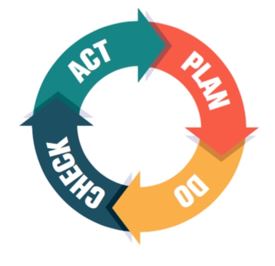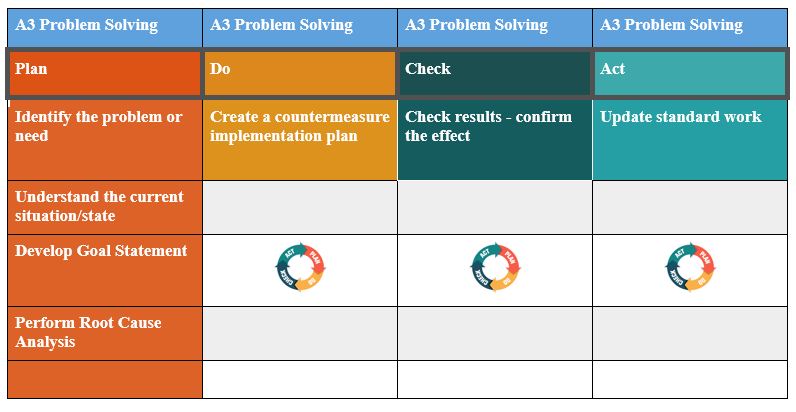This is the second of a three-part series, “Keeping anchored in the twirling seas of healthcare.”

Have you heard of the Toyota Way? Many times with Toyota methodology, individuals become lost and forget the principles and goals behind the Toyota Way.
A key principle is agreement on the definition of waste. Typically, it is defined as the activity or activities that customer would not want to pay for, and that do not add value to the product or service from the customers perspective.

The goal is to eliminate waste through understanding the value to customers and how to deliver that value. That is where A3 thinking becomes part of the tools that leaders can have in their toolbox.
Let’s start at the foundation of all quality methodology including A3 thinking, the PDCA (Plan-Do-Check-Act) model.
Typically the model is demonstrated in a circle showing continuous movement.
With A3 Thinking, the PDCA Model is developed into a working document that guides decisions and organizational actions.
Many leaders during survey processes will identify PDCA modeling as the framework for their quality improvement activities. What is being noted by surveyors is the lack of application and discipline in utilization of the model.That is where A3 Thinking comes to the rescue.

The following link provides you a template that you can download and utilize for your process improvement actions.
https://citoolkit.com/wp-content/uploads/templates/a3_simple.pdf
A3 reporting causes you to approach process improvement with new questions. An example is clarification of the statement of the issue being addressed. Really understanding how the performance of the process currently happens is essential before trying to improve it. Many times we work to improve systems and processes blindly or with bias.
We think we know what is happening daily within our care settings, but I assert we really do not know. To illustrate, I like to use visual drawings with stick figures on moveable notepaper. For example, in utilizing A3 thinking, I was shocked when working through a problem how many times the stick figures moved and more stick figures were added to get the work done. I really did not understand how many times a handover happened with what I thought was a singular action of care.
A3 takes you through how important clarification and alignment of goals will be to sustainable success. Assuring a deep dive into influencers and causations to the problem and then development of the implementation plan also are important to sustainable change. Here the implementation plan has a twist.
A3 thinking requires countermeasures. Countermeasures are the improvements to be made to the work or care processes that will move the process closer to the desired condition identified in the goal statement.
Rethinking about not fixing the problem, but moving towards a desired goal then elevates performance. Moving toward a desired goal reframes a quality improvement plan from reactive to strategic design.
Martie Moore, RN, MAOM, CPHQ, is the chief nursing officer at Medline Industries Inc. and a corporate advisory council member for the National Pressure Ulcer Advisory Panel.





